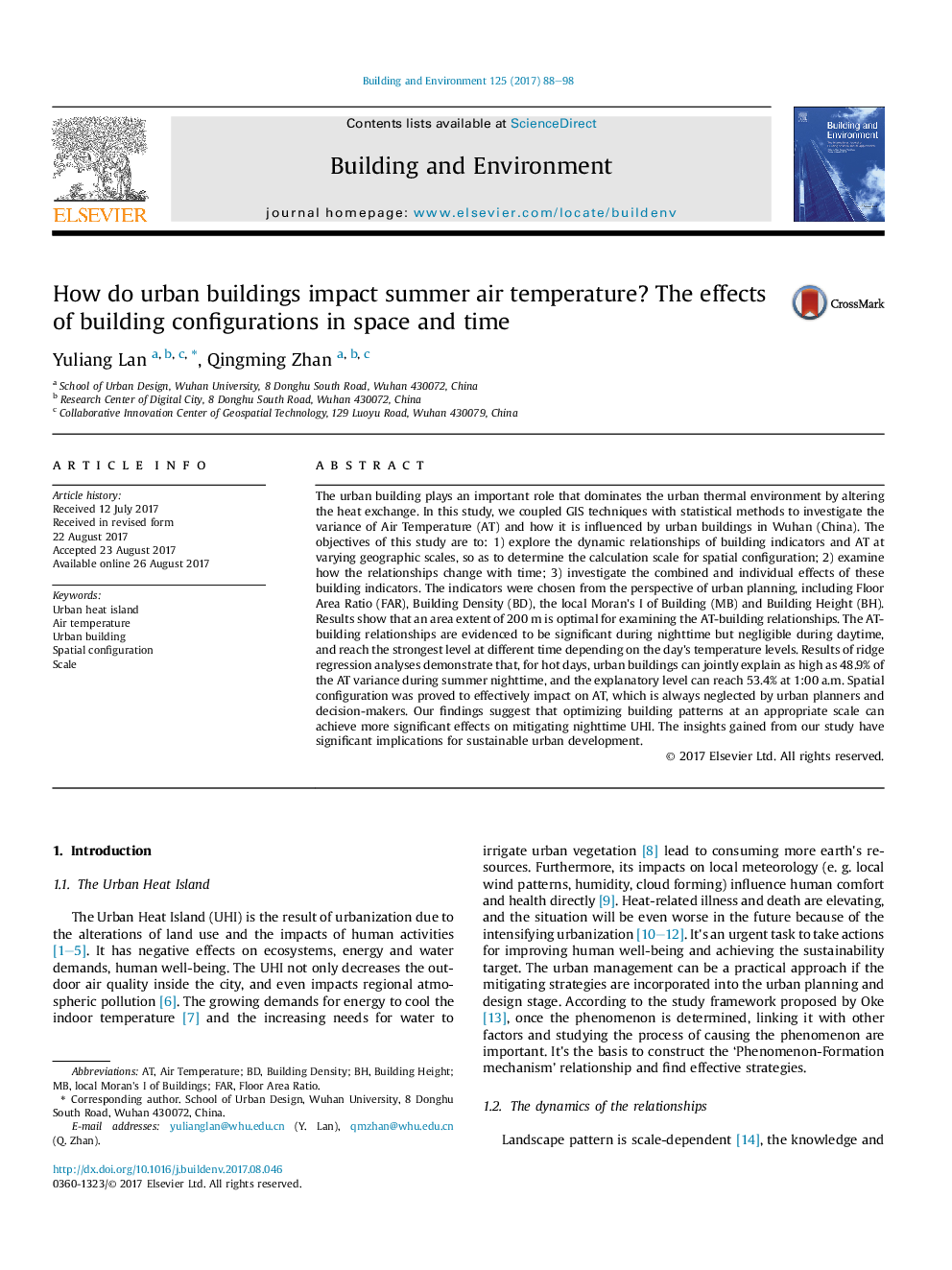| Article ID | Journal | Published Year | Pages | File Type |
|---|---|---|---|---|
| 6479217 | Building and Environment | 2017 | 11 Pages |
â¢The quantified building configurations were involved to explore its impacts on summer air temperature.â¢Scaling effects on building-temperature relationships revealed that 200 m can be a reasonable size in our study area.â¢Buildings only significantly amplify the air temperature during the nighttime.â¢Combined effects of composition and configuration would potentially achieve more effective cooling effects.
The urban building plays an important role that dominates the urban thermal environment by altering the heat exchange. In this study, we coupled GIS techniques with statistical methods to investigate the variance of Air Temperature (AT) and how it is influenced by urban buildings in Wuhan (China). The objectives of this study are to: 1) explore the dynamic relationships of building indicators and AT at varying geographic scales, so as to determine the calculation scale for spatial configuration; 2) examine how the relationships change with time; 3) investigate the combined and individual effects of these building indicators. The indicators were chosen from the perspective of urban planning, including Floor Area Ratio (FAR), Building Density (BD), the local Moran's I of Building (MB) and Building Height (BH). Results show that an area extent of 200Â m is optimal for examining the AT-building relationships. The AT-building relationships are evidenced to be significant during nighttime but negligible during daytime, and reach the strongest level at different time depending on the day's temperature levels. Results of ridge regression analyses demonstrate that, for hot days, urban buildings can jointly explain as high as 48.9% of the AT variance during summer nighttime, and the explanatory level can reach 53.4% at 1:00 a.m. Spatial configuration was proved to effectively impact on AT, which is always neglected by urban planners and decision-makers. Our findings suggest that optimizing building patterns at an appropriate scale can achieve more significant effects on mitigating nighttime UHI. The insights gained from our study have significant implications for sustainable urban development.
